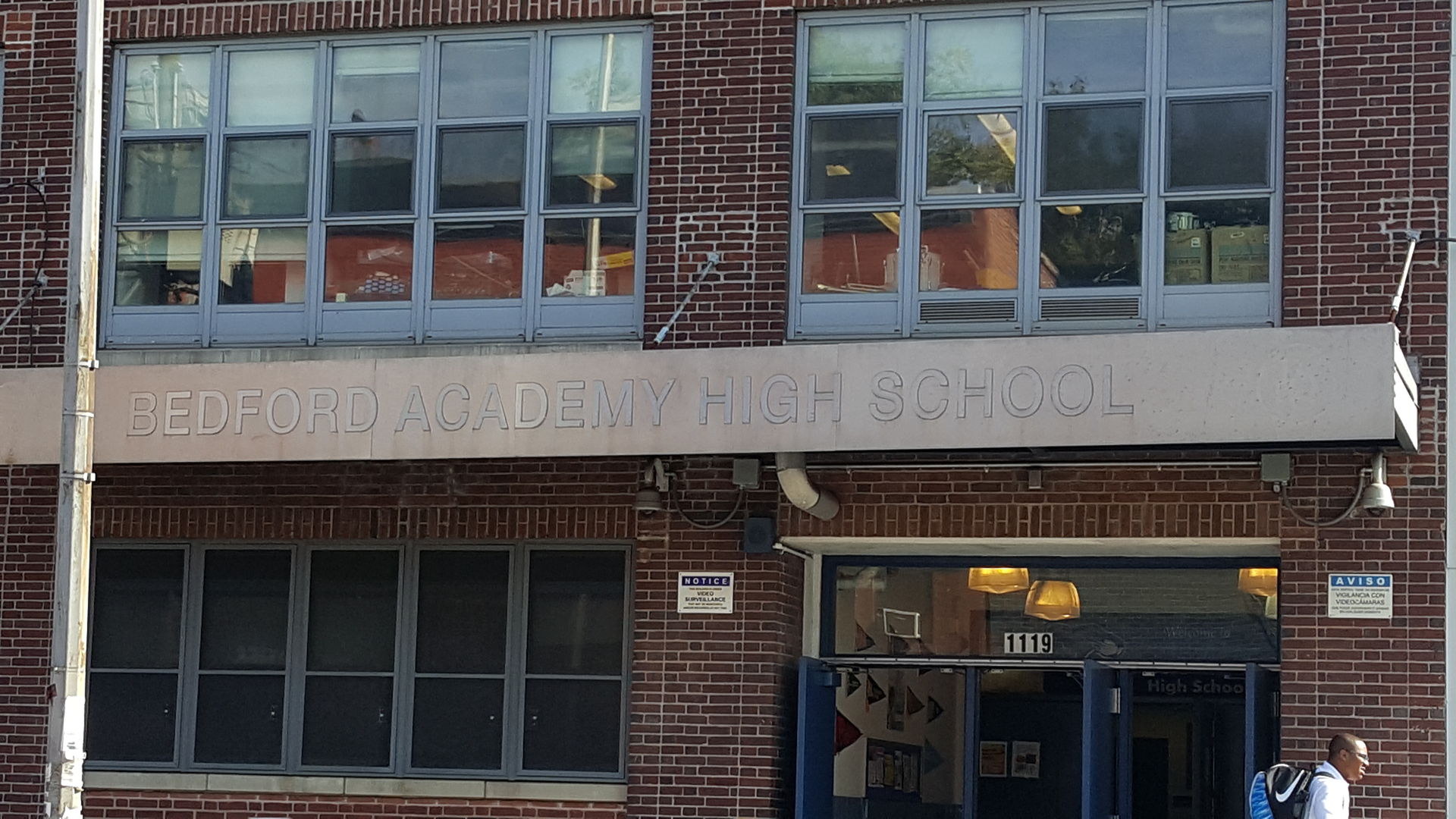The 21-week comprehensive curriculum—which counted towards high school course credit—was open to 11th and 12th grade students without any additional prerequisites. While it appealed to students with an interest in science, students who were unsure about their plans after high school were also encouraged to enroll as a way to explore opportunities and career paths within the energy sector. Bedford Academy earth science teacher Mackenzie Ulrop volunteered to facilitate the program under the guidance of the school’s Assistant Principal, Cluny Lavache. Summer Energy Academy (SEA) program instructors Samantha Tulloch, Director of Pedagogy & Mathematics, and Kori Lee-John, Mentor and former SEA program student, were also instrumental in implementing this course. Brookhaven Laboratory’s Diversity, Equity, and Inclusion office worked in collaboration with the Office of Educational programs and several experts in the field of sustainable energy to help build the course and engage students.
“We’re excited to participate in this pilot program. It gave our team a chance for sustained engagement with the same group of students over several months, a change from our typical field trip program,” explained Bernadette Uzzi, Supervisor of Pre-College Programs at Brookhaven Lab. “The course provides a broad overview of the energy sector, with a focus on career, highlighting and featuring different types of technical jobs. While sustainable energy, like wind, solar, hydro, and geothermal, are the focus of the program, we also touch on the generation, storage, and consumption of energy in an engaging way. Another important component is building an awareness of the work being done at Brookhaven Lab and the staff who make it happen. We also want to inform students about high school research experiences and undergraduate internships at the lab.”
Though the pandemic came with the challenges of engaging students in a virtual setting, it also had the advantage of making the collaboration with Brookhaven Laboratory and other outside facilities and experts more accessible. Bedford Academy and Brookhaven Lab, for example, are both in New York State, but Brooklyn and Upton, the towns where they’re located, are about 65 miles apart. In this format, students could see facilities and chat with professionals in the field that are further away more often, without the hassle of arranging travel and the time involved.
“One benefit of having presenters attend virtually was that they didn’t need to leave their place of work,” said Lavache. “There was a speaker studying geology and volcanic activity in the Canary Islands and presenting to the young people while they were there. Now, there are students that want to travel to the Canary Islands and see these things for themselves. It exposes them to an endless number of opportunities.”
Despite not being in person, the program remained very hands-on. Students were provided with the physical materials necessary to follow the course and were able to access simulations to reinforce certain concepts, which students engaged with enthusiastically. The integration of guest speakers and industry videos, in particular, received a lot of positive feedback.
“It was very important that we brought in people who look like our students, professionals who came from the same areas, since this isn’t something that they normally see. These speakers are telling them that this is a field that’s open and possible for you as well,” said Tanzee Silver, Director of the SEA program. Silver is a Senior Energy Analyst at the Office of Sustainability at The Port Authority of New York & New Jersey. Her expertise in sustainable energy and knowledge of the New York Metro area’s energy needs makes her a valuable resource and mentor for this program.
The real-world applications of the concepts being introduced made the content interesting, relevant, and accessible. Learning about the energy sources that run their city and recognizing the components of those systems, like the steam vents that billow over New York City’s streets, made these lessons memorable. The positive impact of this course was apparent in student feedback and measurable in their performance.
“From the test scores we’ve had so far, we can see that the students are retaining this information,” Silver explained. “They’re getting a better understanding of how energy works in our sector and how we can conserve it and move more towards a sustainable lifestyle.”
“These kinds of programs are highly successful and impactful with our students,” Lavache added. “Many of them go into STEM fields, particularly engineering. We have a former student that I’ve been in touch with who is now a nuclear engineer. It’s so rewarding to see, and ideally, it’s the direction that we aim for with our students.”
Science, technology, engineering, and mathematics (STEM) touch everyone’s lives, but not everyone will consider a career in these fields, as they can initially be seen as intimidating. It’s not easy to present the diverse array of jobs and educational programs in tightly packed high school curriculums. Because of this, it’s important for students to not only form a STEM identity, to confidently see themselves exploring the way their world works through these fields, but to establish STEM persistence. Programs like this establish positive experiences that start early on in school and develop students that are workforce-ready.
Based on Bedford Academy’s 98 percent college acceptance rate from June of last year, it’s safe to say that most students at the academy will go on to pursue their talents and interests in higher education, however, not every path forward in STEM requires the same resources and investments. A key benefit of this program is also highlighting opportunities for interesting and lucrative STEM careers within the energy sector that might not require a degree.
“After high school, there are students that might decide they can’t or don’t want to go to college,” explained William Suggs, President of the New York Chapter of the AABE and President of the SEA program. “If they take an entry level job in the energy sector, it’s entirely possible, within a few years, for them to be making a six-figure salary in a helper position. This can change the dynamic of a whole community. These young people are performing fulfilling work and making an income that allows them to go out and purchase property and provide for their families.”
Programs like this have long term positive effects that start with each student and ripple outward. The sustainable energy course, in particular, gives young people the information and tools they need to meet the environmental and energy challenges of today and tomorrow, all while changing the landscape of what it means to have a career in STEM.
Brookhaven National Laboratory is supported by the Office of Science of the U.S. Department of Energy. The Office of Science is the single largest supporter of basic research in the physical sciences in the United States and is working to address some of the most pressing challenges of our time. For more information, please visit science.energy.gov.
Follow @BrookhavenLab on Twitter or find us on Facebook.




